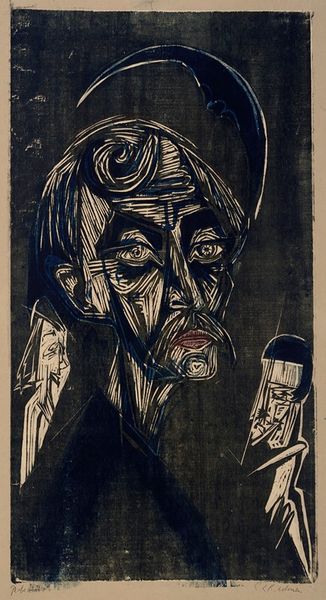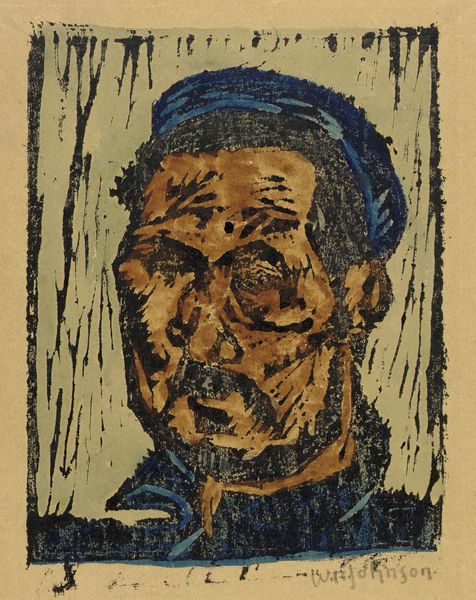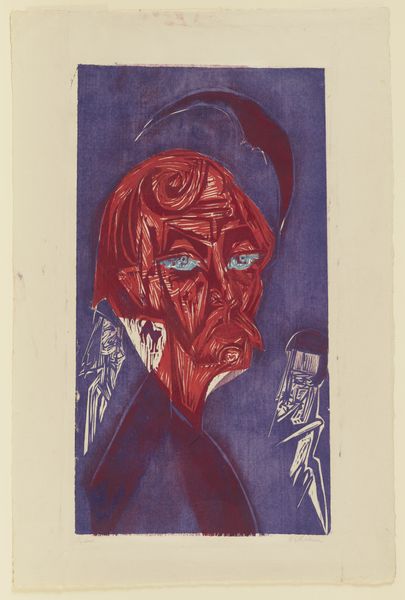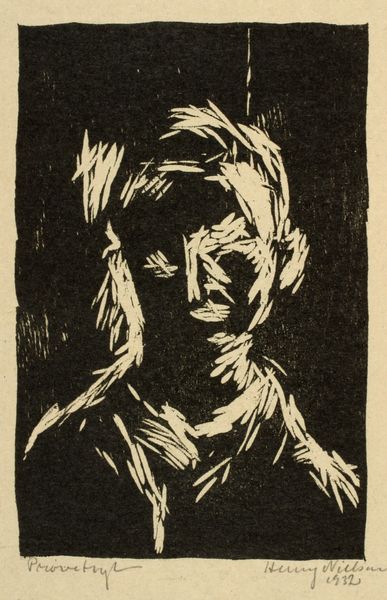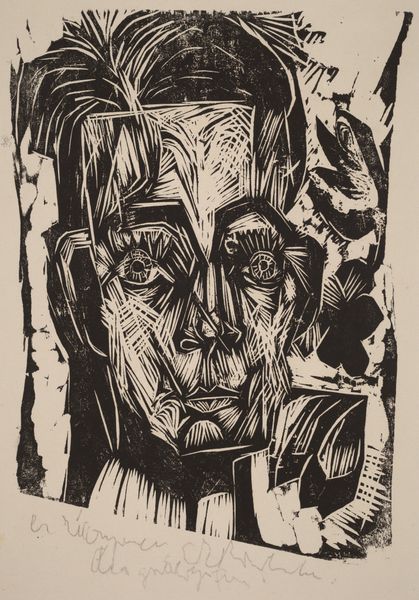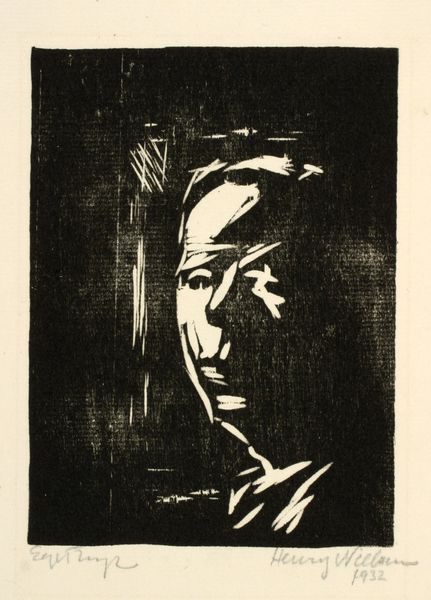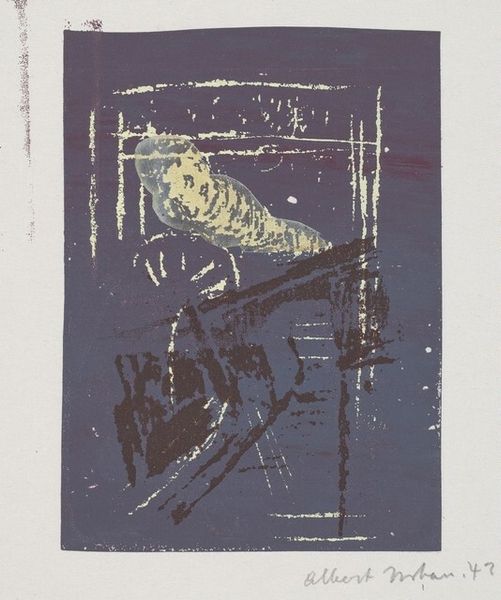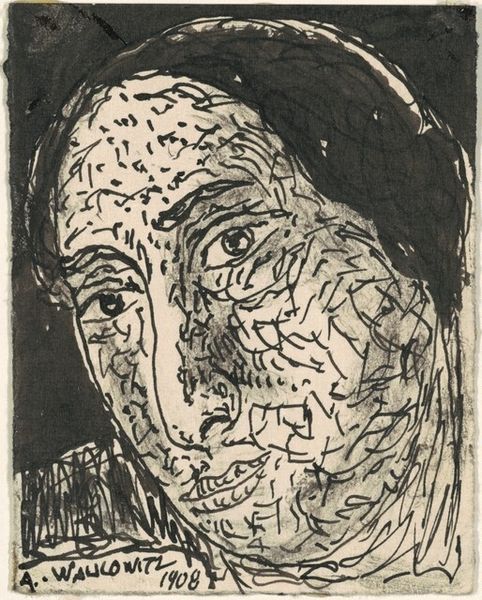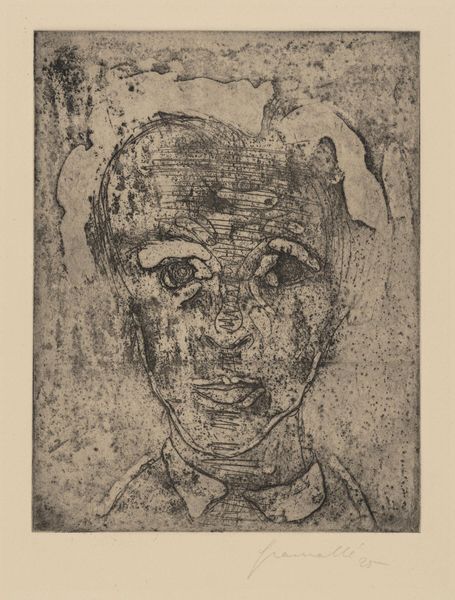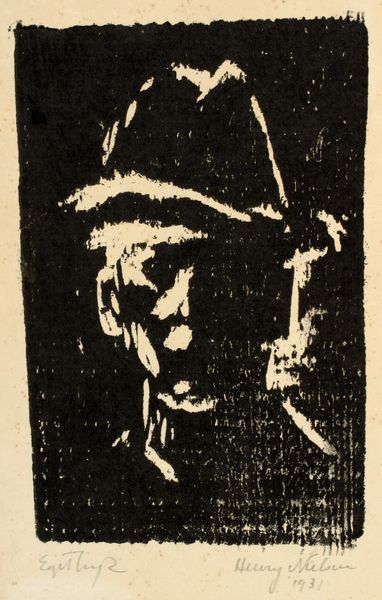
drawing, print, linocut
#
drawing
# print
#
linocut
#
figuration
#
portrait drawing
#
portrait art
#
modernism
Dimensions: overall: 58.5 x 46 cm (23 1/16 x 18 1/8 in.)
Copyright: National Gallery of Art: CC0 1.0
Curator: Well, what's your immediate reaction to this arresting portrait? It's titled simply "Jacob Kainen," created in 1997. The artwork combines linocut printmaking with drawing, it appears. Editor: Stark, almost confrontational. There's a tension between the flatness of the linocut and what seems like an attempt at realistic representation of this… perhaps an older man? I wonder who he was and what their relationship was with the artist, Bobby Donovan, who is indicated in the work with a signature at the lower right margin. Curator: Knowing it's a linocut offers a point of entry. Consider the labor: the cutting, the inking, the pressure of the press. It is not only how, but the materials themselves offer a sense of working-class expression. And then a subsequent stage of adding what appears to be colored pencil markings into this impression? An unusual combining of modes of making that collapses assumptions of fine art. Editor: Precisely. If we're thinking about labor, it would be crucial to find out more about who Kainen was and Donovan's artistic influences. What historical currents did this figure wade through? I wonder if there are ways in which both Kainen and the artistic media were deployed in specific institutional and ideological formations? How does this work relate to similar portraiture done in other cultural venues? Curator: That's the puzzle, isn't it? The interplay of formal presentation and social realities. We might start with its apparent stylistic modernism. Its departure from photographic realism asks us to look closer not just at the surface but also at the social underpinnings of seeing, of the mechanics of portraiture in an age of mass reproduction. Editor: It brings into sharp focus the artifice of the act of portraiture itself. By not conforming to expectations, Donovan and Kainen demand that the viewer grapple with the fact that we are seeing both someone specific and a constructed image mediated through artistic choice. We’d also need to think of its gallery reception. Curator: True. Its public reception matters just as much as the choices around production, which often dictate consumption practices. After all, the piece’s presence in a public archive fundamentally alters it. The archive, in this way, is a form of aesthetic contextualization! Editor: Fascinating to consider these factors further. Curator: Indeed. Food for thought.
Comments
No comments
Be the first to comment and join the conversation on the ultimate creative platform.
